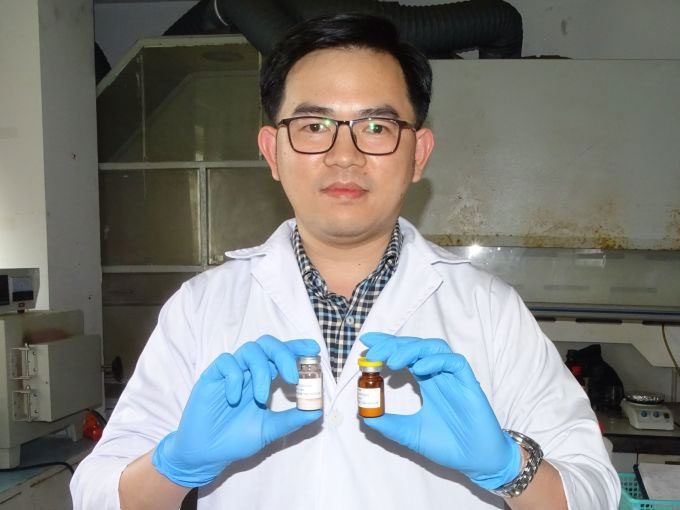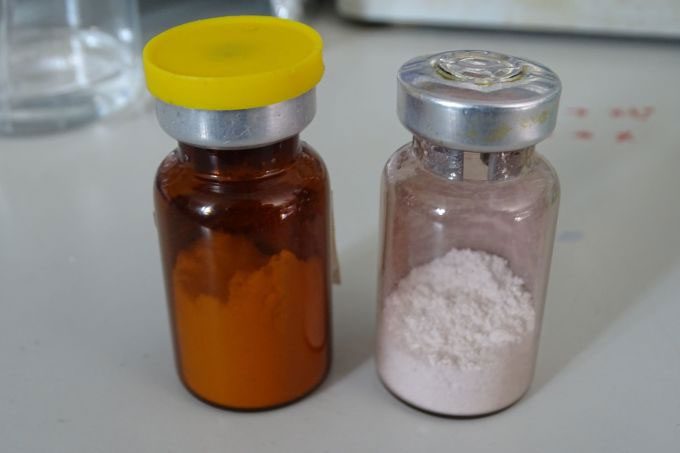Associate Professor Dr. Nguyen Dai Hai and his team successfully develop artificial bone to regenerate cells and restore lost bone.
Currently, Associate Professor Hai is the Deputy Director and head of the biomedical materials research group at the Institute of Applied Materials Science, Vietnam Academy of Science and Technology. These days, he and his partners from several major hospitals and enterprises are preparing for the clinical trials of artificial bone on humans, expected to commence early next year.
He mentioned that the trials will go through an ethical review board for evaluation and approval, starting with a small group before expanding to a larger patient population. “The hospitals and enterprises are committed to supporting the research team in the next steps,” said Associate Professor Hai.
Artificial bone is the result of research conducted by Associate Professor Hai and experts from the University of Medicine and Pharmacy and the University of Natural Sciences during the period from 2019 to 2021, funded by the Department of Science and Technology of Ho Chi Minh City. The goal was to create artificial bone using domestic technology, with quality equivalent to foreign products, at a cost of only 30% to 50% compared to imported products.
The research team developed two products: α-Calcium Sulfate Hemihydrate (α-HH) and Biphasic Calcium Phosphate (BCP), which possess basic properties similar to human bone, at a laboratory scale. These products are made from initial materials of calcium sulfate and calcium phosphate. By inducing a chemical reaction that alters their structure and morphology, conditions are created to facilitate rapid bone cell growth. After implantation, α-HH and BCP will eventually form new bone.

Associate Professor Dr. Nguyen Dai Hai and two powdered artificial bone products. (Photo: Ha An)
He shared that the most challenging and time-consuming phase was experimenting with various chemical reactions using different component ratios to produce a product that closely resembles real bone, aiding in the growth of bone cells. According to Associate Professor Hai, α-HH has rapid setting properties, forming scaffolds that support cell development and bone regeneration. In contrast, BCP is highly effective for large bone defect reconstructions.
After several months of experimentation, the team produced two powdered artificial bone products and conducted animal trials on 28-week-old New Zealand rabbits weighing 3 – 3.5 kg. The rabbits were divided into experimental and control groups. The experimental group underwent knee surgery and received artificial bone implants, which were then monitored and compared with the control group that did not undergo surgery to evaluate bone regeneration capabilities. The results showed that the rabbits grew and developed normally, with no fatalities or adverse biological reactions.
After six months, the results from the rabbits indicated good bone regeneration and stable growth. Following this success, the research team is preparing for commercialization. “Conducting clinical trials on humans is a long and costly process, so we hope to have the support of research institutions and enterprises to bring the product to market soon,” Associate Professor Hai stated.

Artificial bone products BCP (left) and α-HH from the research group. (Photo: Ha An).
Associate Professor Hai’s determination to conduct this research stems from personal family experiences. Two of his relatives suffered from bone resorption in the facial area, necessitating surgeries to transplant bone from other parts of the body to the damaged facial area. They had to supplement with artificial bone, costing hundreds of millions of VND, yet their condition did not improve. “Fortunately, my relatives had the financial means to afford such procedures. For those living in poverty, it is very challenging to access treatment,” he noted.
According to Associate Professor Hai, the method of autologous bone grafting, which involves transferring bone from one part of the body to another, can effectively replace bone. However, patients must endure pain, and the available bone supply is limited. On the other hand, using animal bone grafts carries a high risk of rejection and potential transmission of infectious diseases. “The use of artificial bone tissue is considered optimal as science has made significant advancements, especially in the field of bone graft materials.”
Associate Professor Dr. Tran Ngoc Quyen, Director of the Institute of Applied Materials Science, Vietnam Academy of Science and Technology, stated that currently, domestic technology for artificial bone primarily exists in the research phase, and people have to use imported products. The team has invested in technology to create nano bone mineral particles with properties equivalent to foreign products. The product has shown excellent effectiveness in bone tissue regeneration and has been successfully tested on animals.
“This lays the groundwork for the research team to move towards commercializing the product, helping to reduce costs for the public. From the regulatory side, we will continue to support the team in further clinical trials in the next phase,” Associate Professor Quyen added.

















































